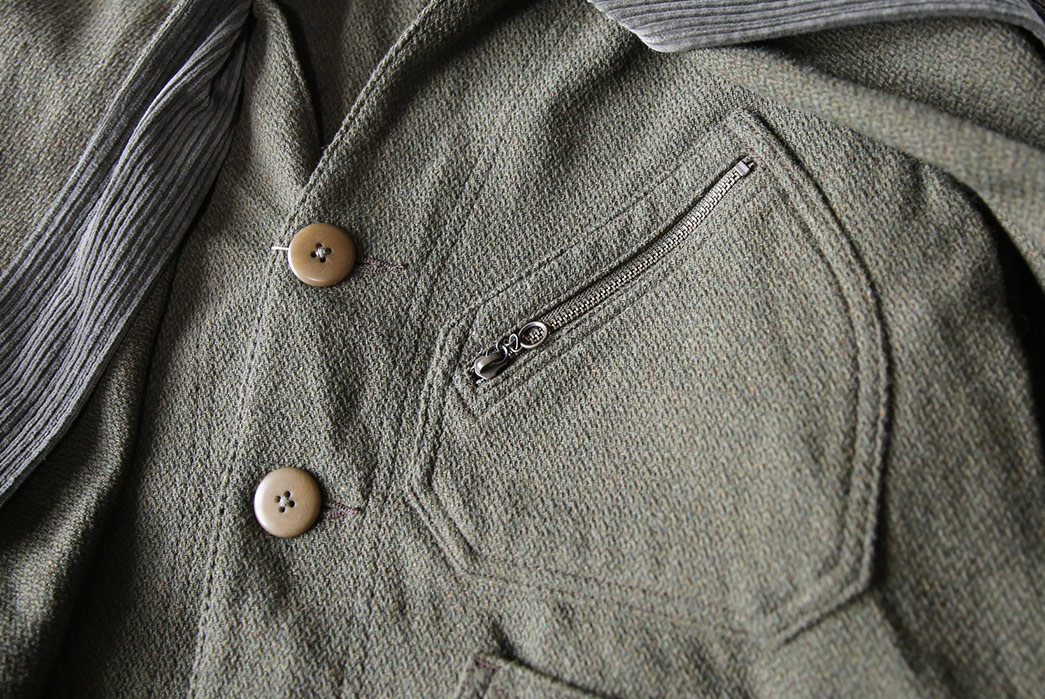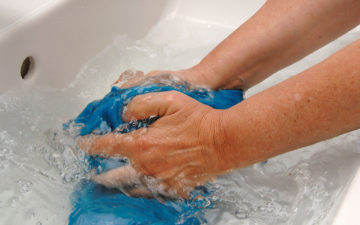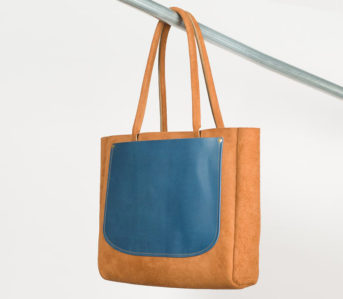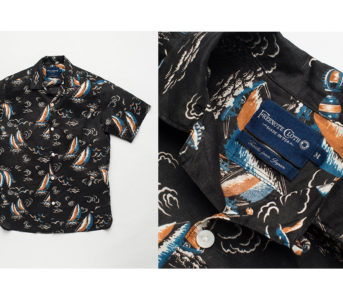The humble button. Such a small yet significant feature of garments. Buttons have been used for hundreds if not thousands of years and forged from a variety of materials from seashell to steel. At its most basic, the button acts as a functional part of a garment to secure two pieces of material together. But the button is much more than merely a pragmatic feature. It can be considered a work of art and can signify an extravagant detail of a garment. You only need to glimpse at a high-fashion runway to see how buttons can be used as ornamentation, or alternatively, examine a military garment to understand their highly practical function.
While we could talk about the history and different types of buttons for days, we won’t excite you with those details for now. What we’re going to focus on instead is one practical skill we should all possess: how to sew a button. Although you could pay a tailor to do this work for you, it’s an easy and simple process which you can do yourself, saving you time and money. Whether you’re swapping an existing button in the name of style or replacing a lost button for more practical reasons, it’s a simple skill that’s super useful. We’re going to go over what materials you’ll need, different kinds of buttons, how to sew a button and what to avoid during the process.
What Materials You Need
Needle
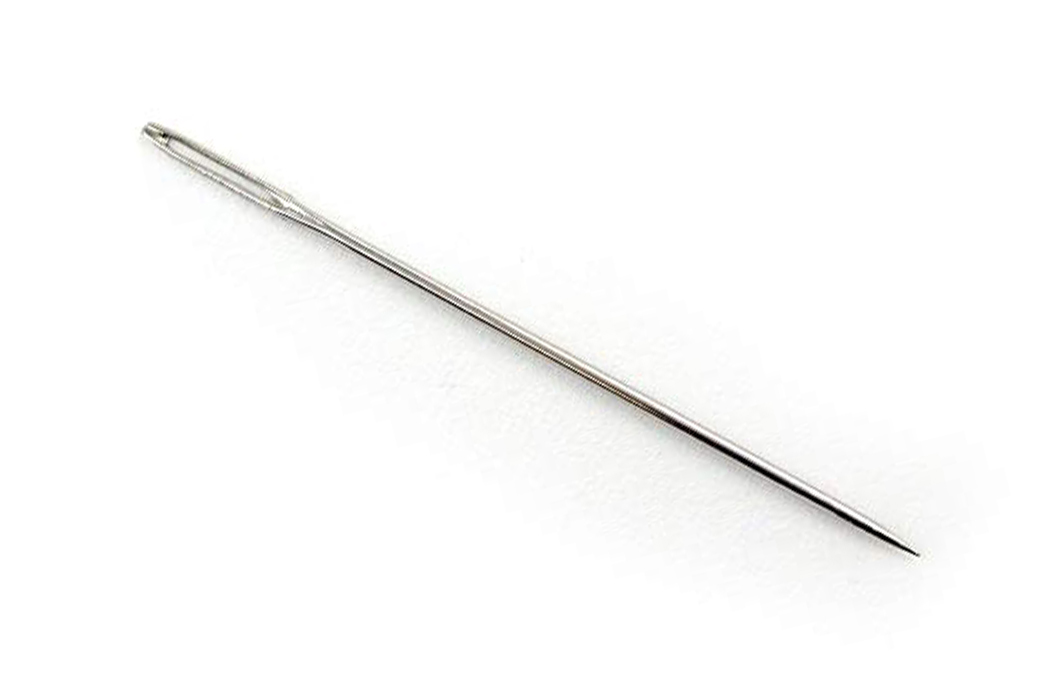
Image via Amazon
Arguably the most important piece of equipment is the needle. These are cheap to buy and readily available everywhere from your local craft store to your neighborhood supermarket. Needles come in different shapes and sizes, so choose wisely depending on what fabric you’re going to attach the button to. For a heavier weight canvas like a cotton duck or heavyweight selvedge denim, you may need a thicker needle. Otherwise, a thinner needle may bend or break.
Thread
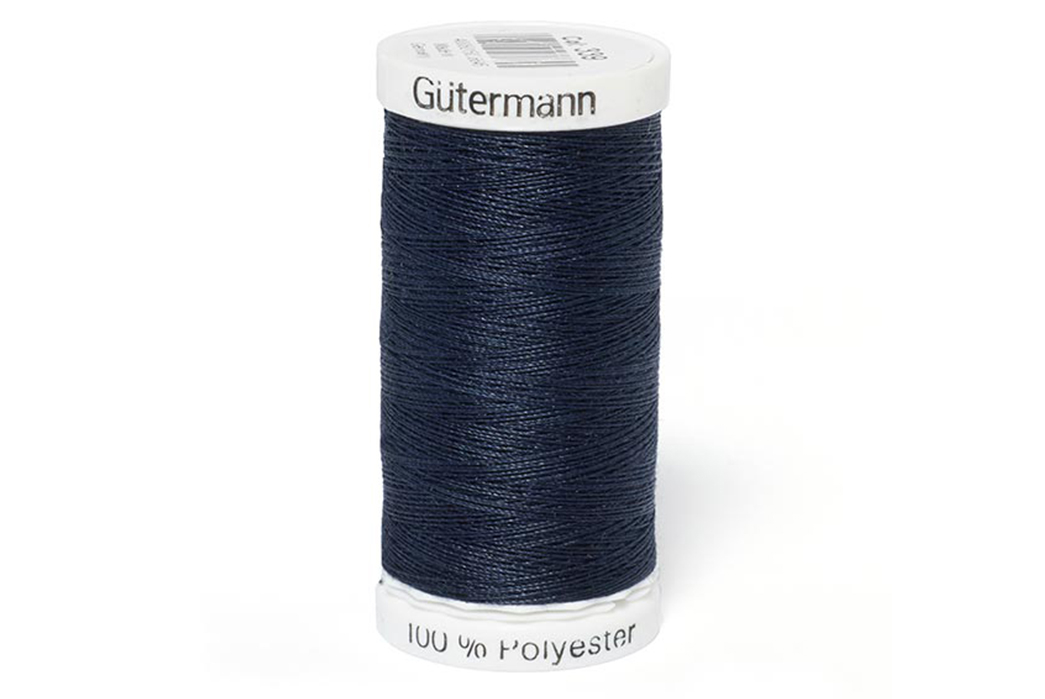
Image via My Fabrics
In order to attach the button to the garment, you’re going to need some thread to sew and hold the button in place. Again, thread is cheap and readily available. Depending on the garment, chose a color which matches your fabric well (ex. if you’re sewing onto navy fabric, go for a navy blue). Or alternatively, pick a color which gives a more decorative ‘pop’ and contrast.
Buttons
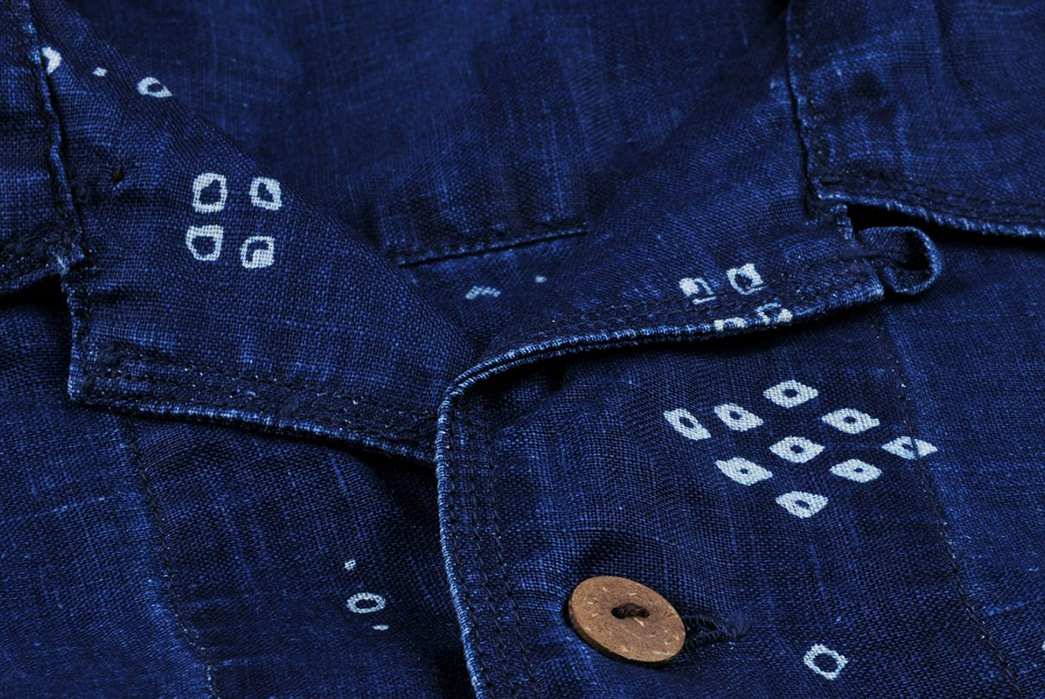
Image via Unionmade
When selecting a button, decide whether you’re simply re-attaching an existing button or replacing with an alternative. A simple eBay search or flea market trip can yield some great results if you’re looking to switch up the look. Most buttons will likely be made from plastic, so go for wood, horn or metal buttons with a design or engraving for an upgraded feel. Vintage workwear buttons can also be a good alternative, but remember that some will need to be attached with a rivet rather than a needle and thread.
Scissors
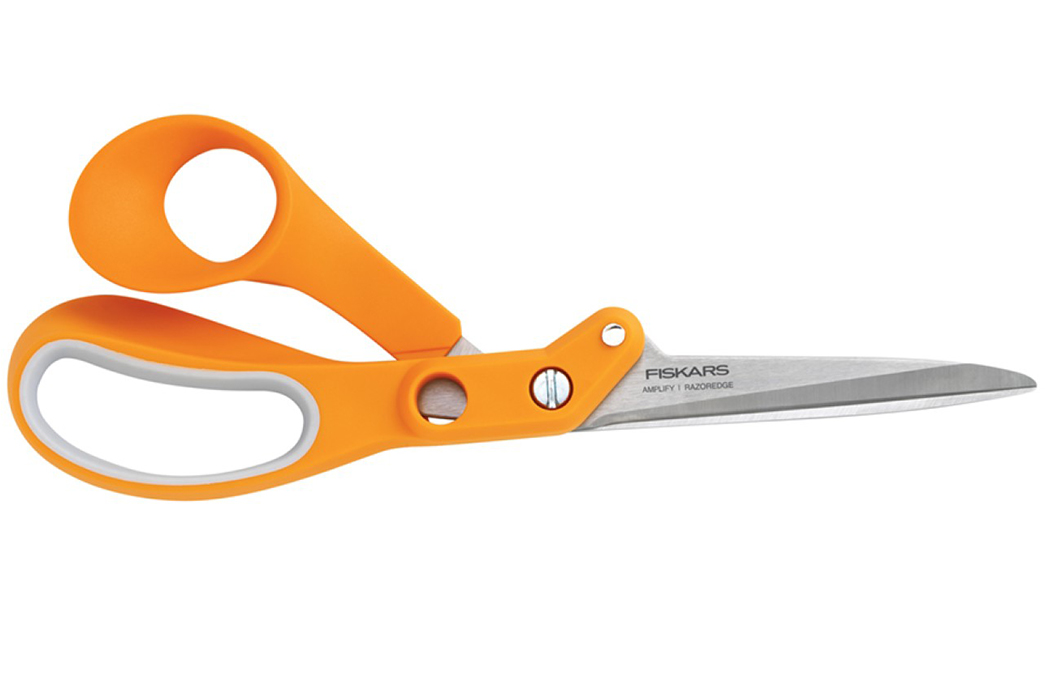
Image via Amazon
A simple pair of kitchen scissors can be used for cutting thread as well as removing an old button but be careful not to damage the fabric if you do decide to remove a button this way. You can go out and buy a pair of proper sewing scissors, but if you’re reading this for your first go at sewing a button, your kitchen scissors will do just fine. But if you foresee future sewing operations occurring, then you might want…
Seam Ripper
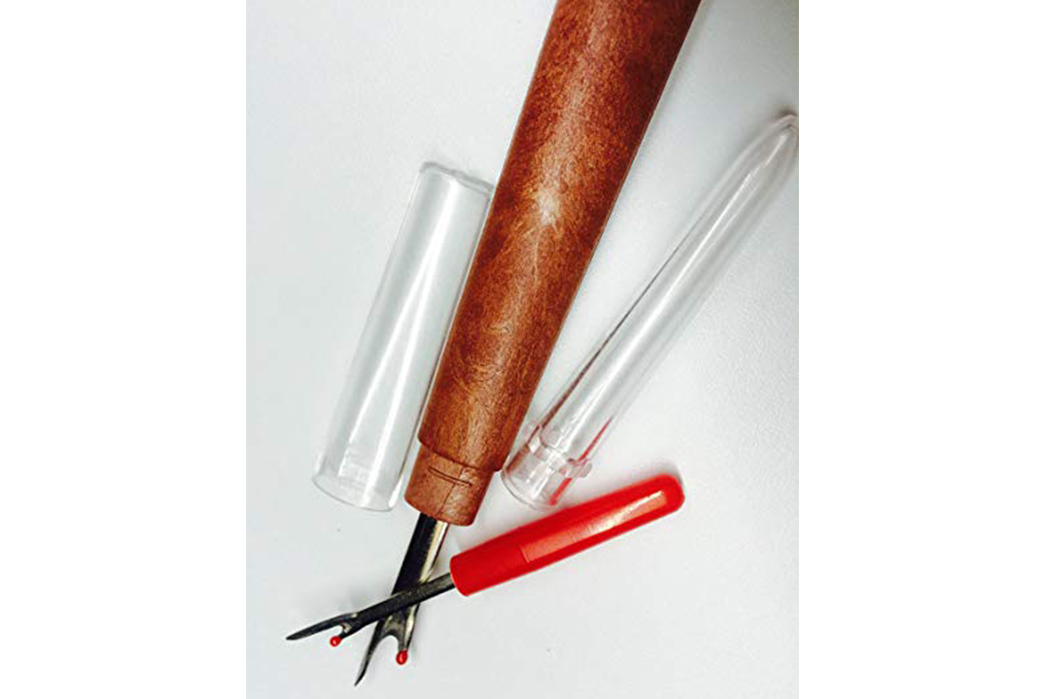
Image via Amazon.
Rather than using scissors to remove a button and any excess thread, this cheap and effective tool is well worth the investment. It will set you back a few dollars from your local craft shop but is specifically designed to remove and ‘un-pick’ sewn threads.
Fabric Pencil
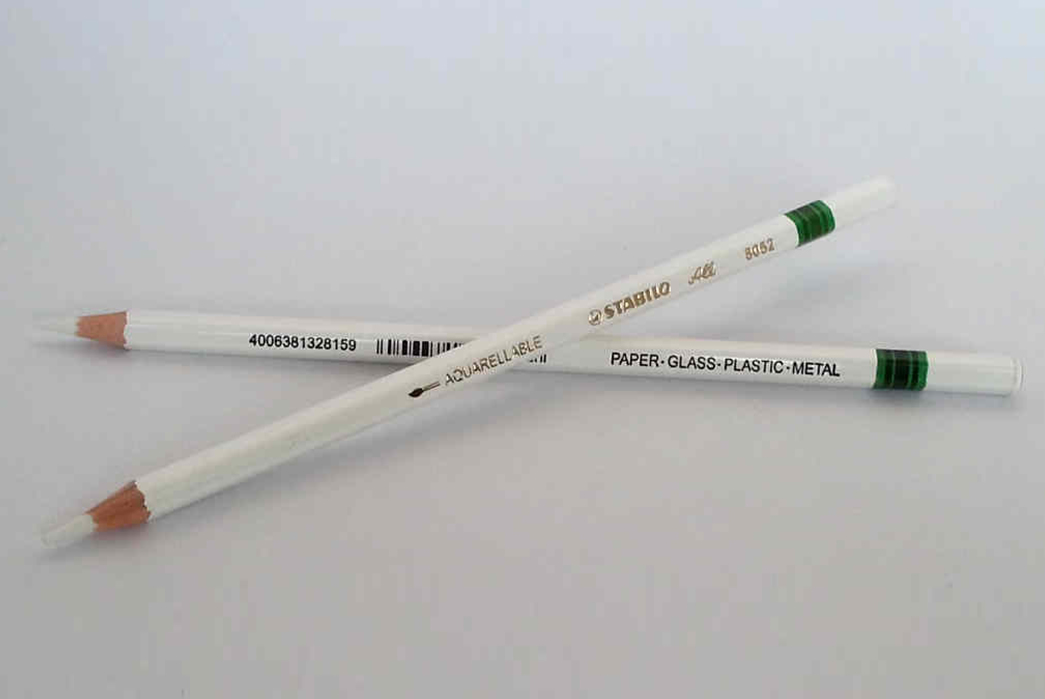
Image via Boat Cover Shop
Try to use existing button holes if you can, but if they’re not visible or starting fresh, you might want to invest in a fabric pencil to mark the fabric where you’re going to sew the button. This isn’t compulsory but it will help produce a tidier finish.
Thimble
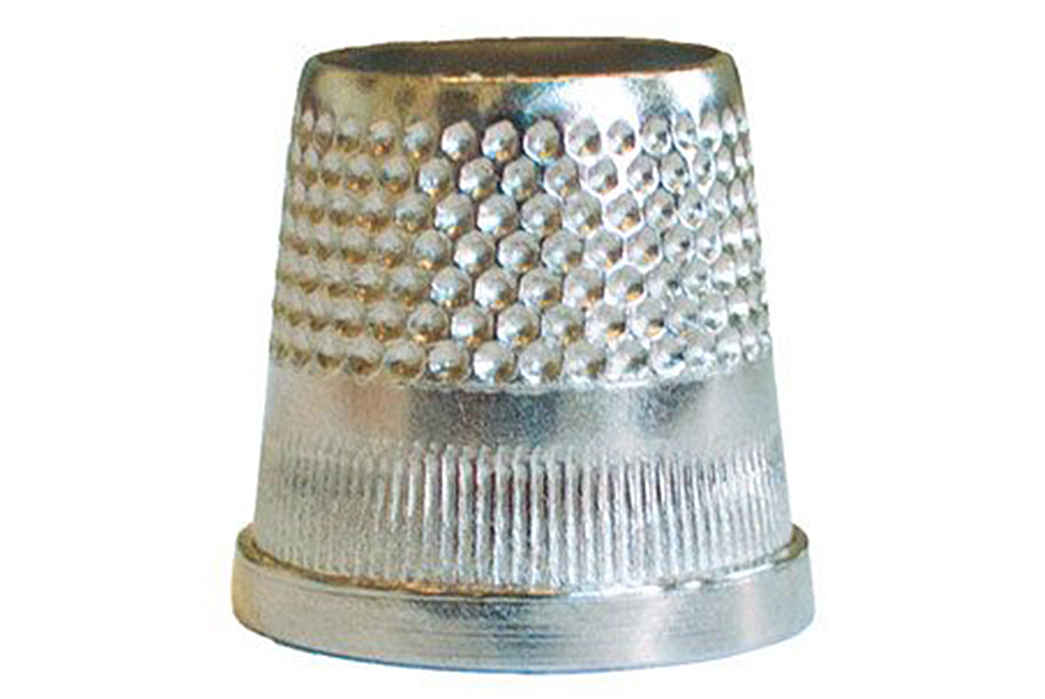
Image via Amazon
Again, this isn’t compulsory but if you’re sewing a heavyweight fabric (think Iron Heart denim or Carhartt cotton duck), you may want to consider the use of a thimble to save the ends of your fingers (and fabric) from becoming a bloody mess!
Needle Threader
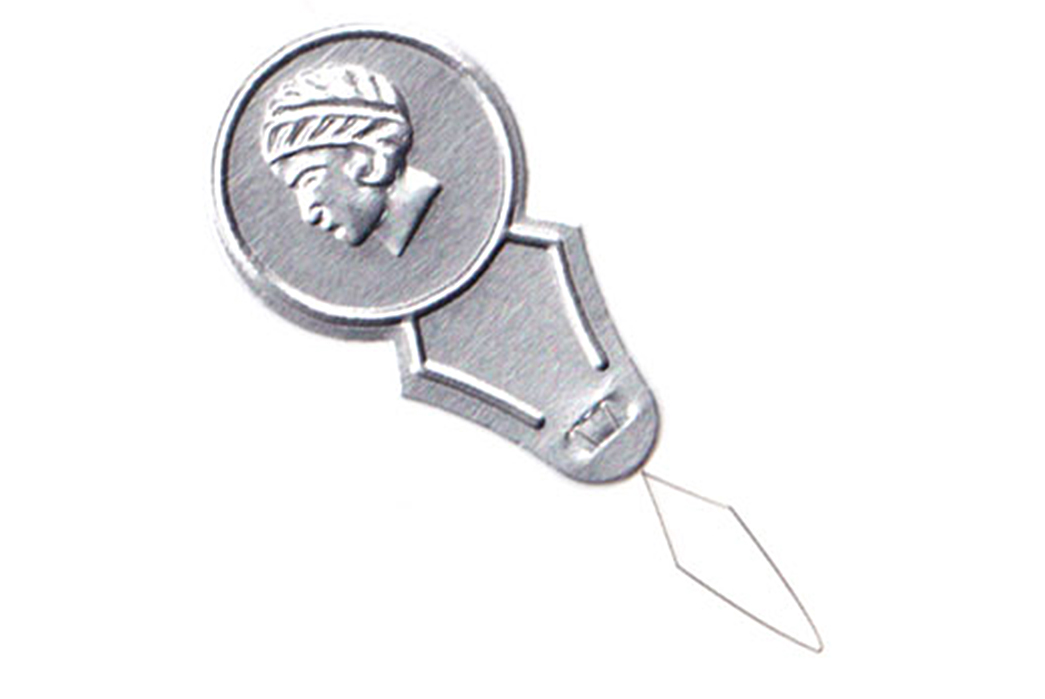
Image via Berlin Embroidery Designs
If you’re new to the world of sewing and aren’t used to threading a needle, this can be enough to put you off from ever sewing anything ever again. Consider investing in a needle threader to expedite the process.
Different Types of Button to Sew
Although the button is straight forward in its application, there are still a number of variants and materials available. We cover the main types below for clarity. As self-explanatory as some of them may sound, the type of button you use will impact the way you sew it.
4-Hole Button
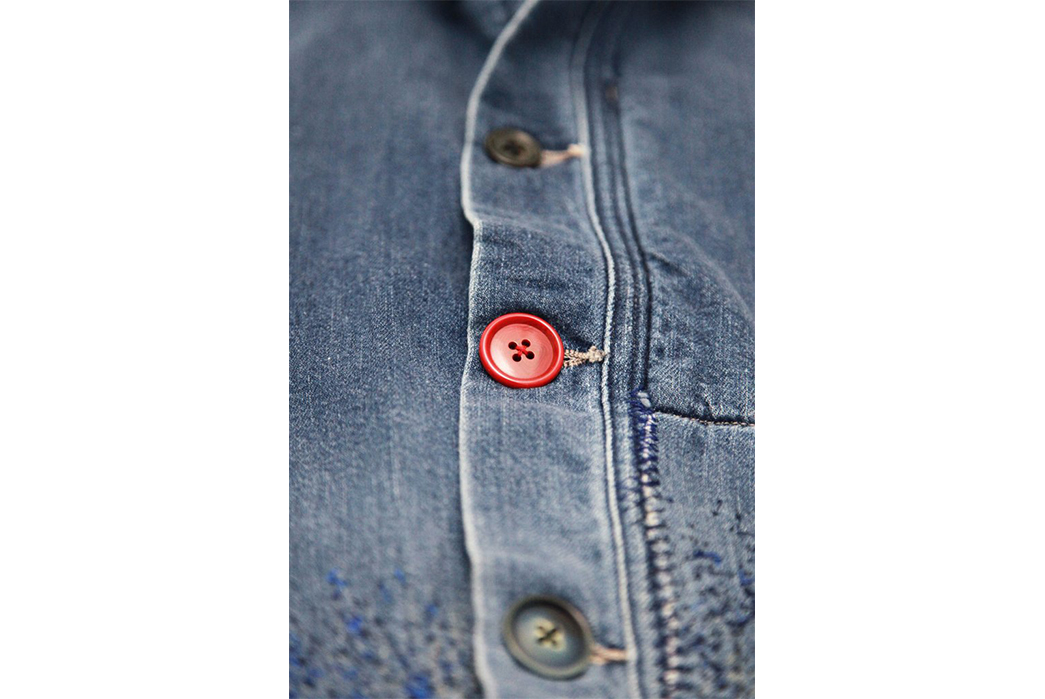
Image via Shop Canoe Club
Many shirts and jackets use 4-hole buttons and they can be sewn in the two ways shown below. For a 4-hole button, it is recommended to create a thread ‘shank’ (see image 3 below), as it allows for the fabric and two layers of fabric to be flush when buttoned. The shank also joins four sets of button thread stitches on the underside of the button, cinching them together so that they fit properly within the buttonhole.
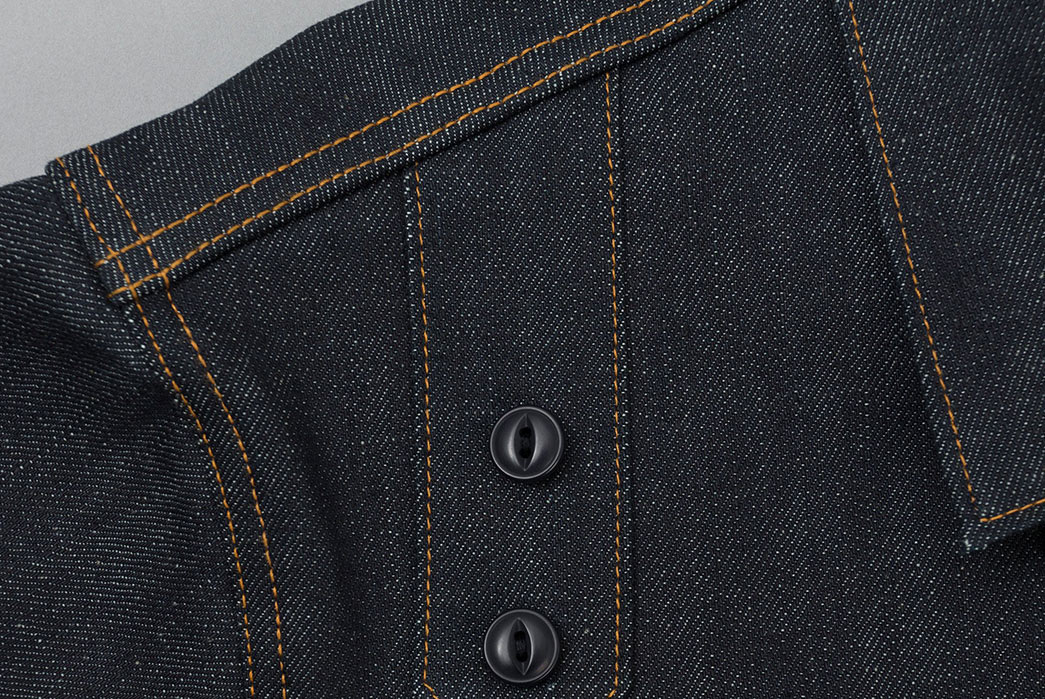
Image via The Hill Side
2-Hole Button
A – hole button is arguably the most simple and easiest to sew, as simply stitching in and out of the holes joins the button to fabric with little complication. This type of button and method is best for thinner fabric, when the button won’t be heavily used or for decorative purposes. It doesn’t require a thread shank like a 4-hole button, but it can be done if necessary.
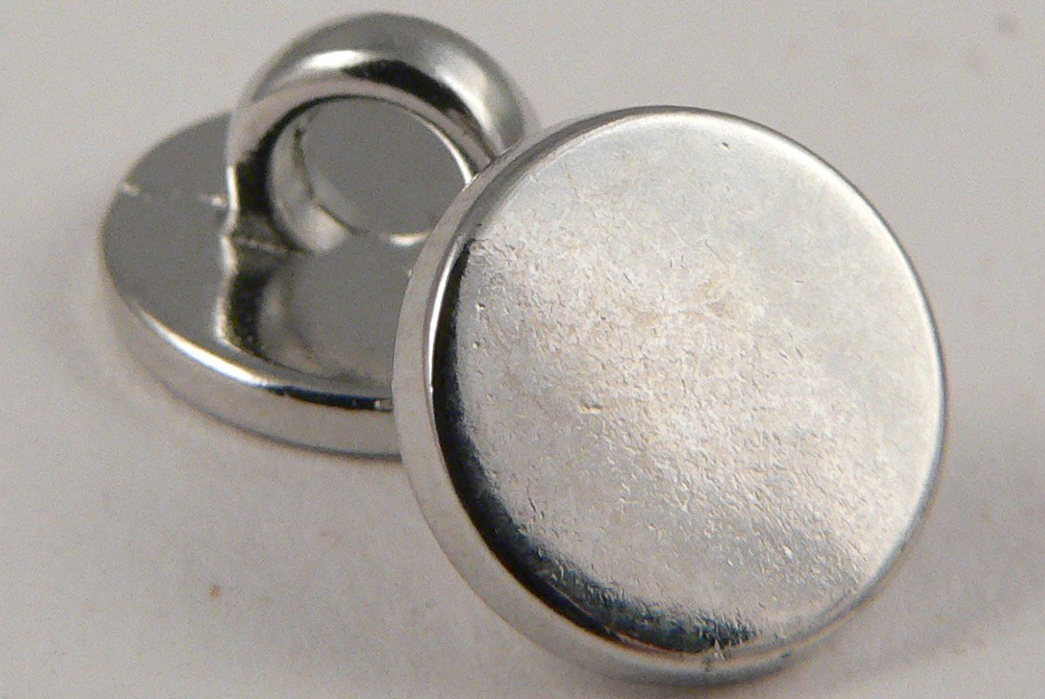
Image via Totally Buttons.
Shank Button
A shank button features a flush front with no holes but is attached via a shank or small column on the reverse of the button. Sewing a shank button is as easy as stitching in and out. The key here is the direction of the shank, making sure it’s the same orientation as the buttonhole for a proper fit. Shank buttons are common with coats and jackets. Depending on the thickness of the fabric, a shank button might require an additional thread shank, so the joining fabric doesn’t pucker.
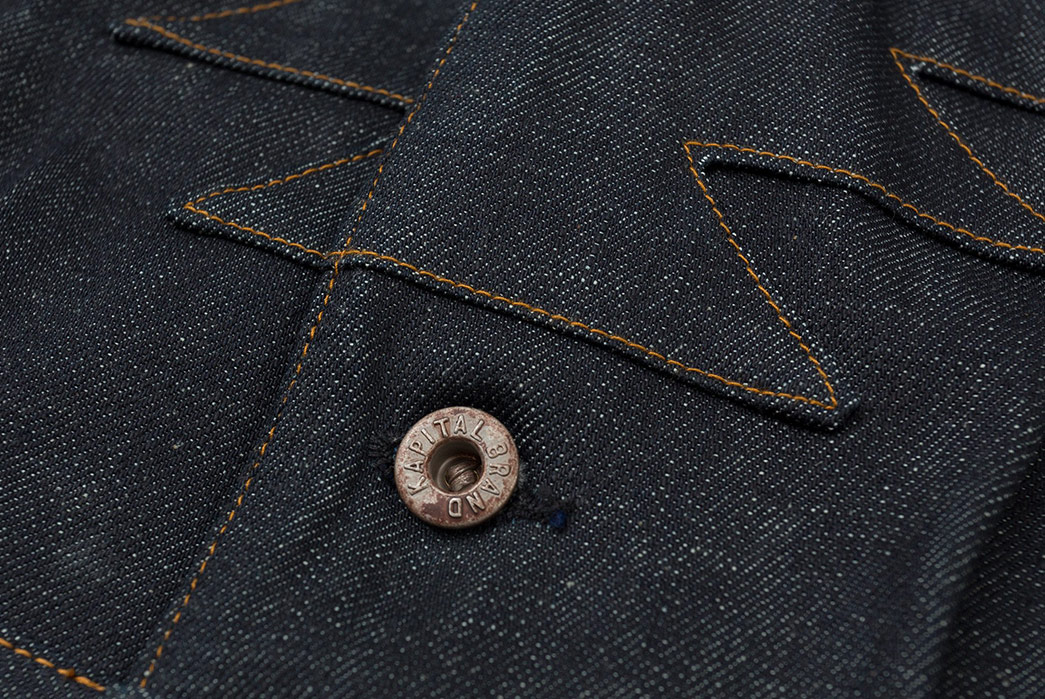
Two-prong metal donut button via The Hillside
Metal Buttons
While this type of button doesn’t fall under the sewing moniker, we wanted to take a second to highlight this popular type of button. Metal buttons tend to take two forms in terms of attachment. The first is a rivet. This is a popular method used on the top button of jeans, which involves pressing a metal rivet through the back of the fabric and down the shank of the button on the other side of the fabric. Commonly done by machine, it is also possible to be done using a handheld riveter or more crudely, a hammer.
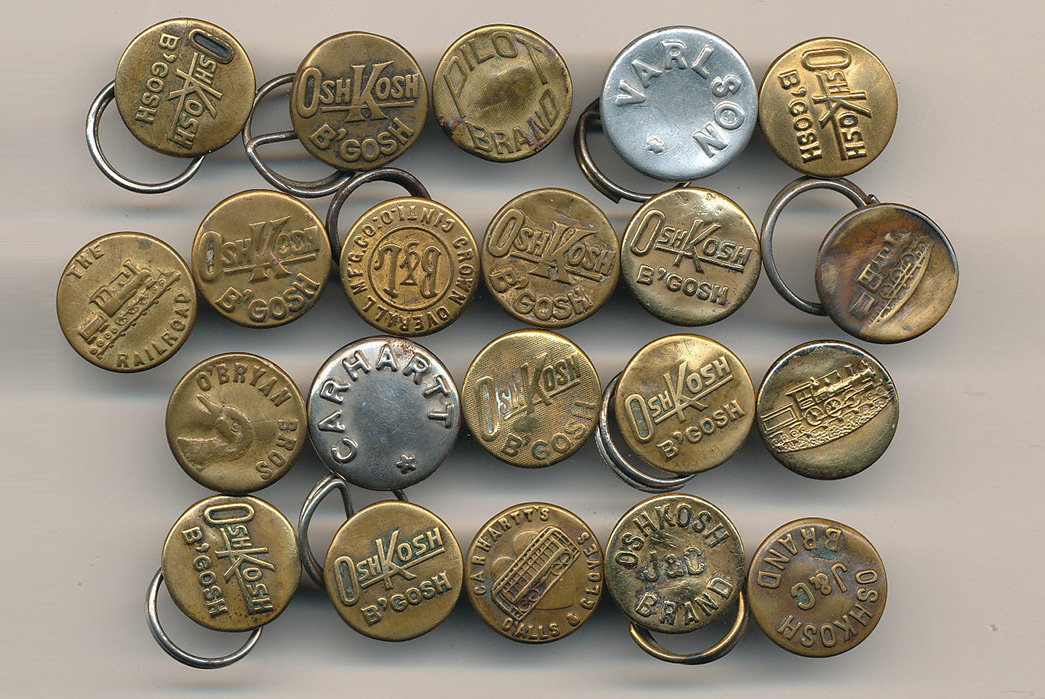
Vintage metal tack buttons via Tumblr
The second method of attaching a metal (and occasionally bakelite or plastic) button is by using a metal ring which is attached to a shank on the back of the button. This is commonly found on vintage workwear, denim and military garments from the first half of the twentieth century (and prior). The main difference within this method is that the fabric needs to have a pre-sewn hole which the button shank goes through and attaches to the metal ring which stabilizes the button to the garment.
How to Sew Different Types of Button
Ok, so now you’ve got your gear and you’re ready to take the plunge and get sewing. While this may seem like a daunting task if you haven’t sewn or replaced a button before, the damage you can do here (if you get it wrong) is fairly minimal. Remember to take your time and be patient with the process. Do not rush into it.
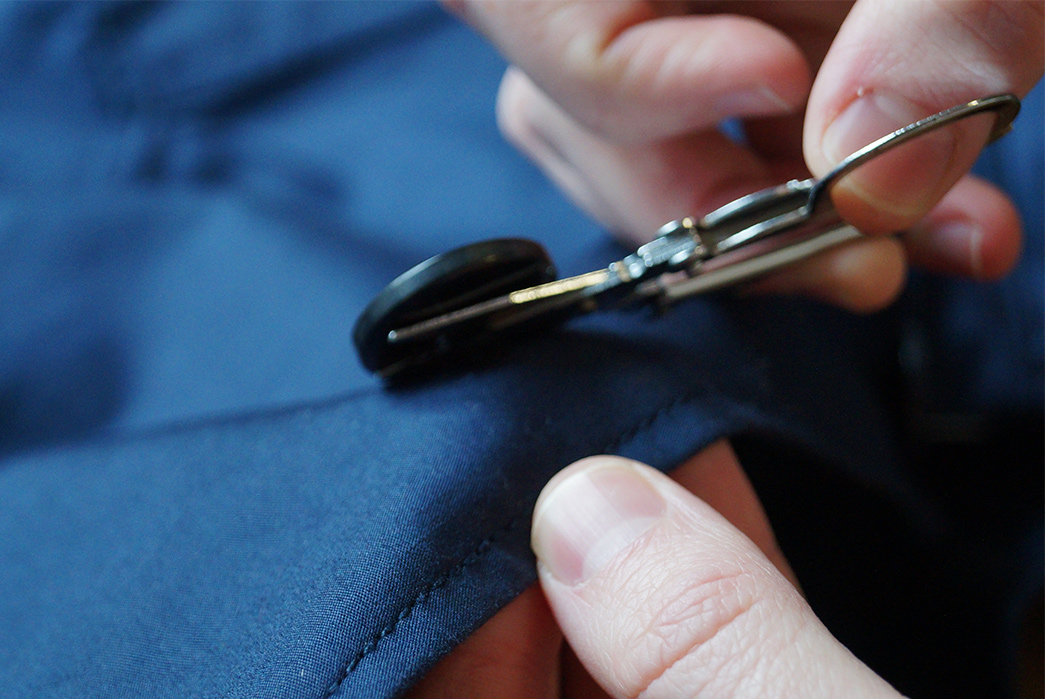
1. Remove the Button and Threads
The first thing to do is to remove the old button and threads from the garment. This can be done using a pair of scissors or an un-picker as highlighted above. Keep things tidy and take your time with this step, ensure that you’ve got a nice clean canvas to work with when you attach the new button. Try not to damage the fabric behind the button. Depending on the garment, you may be able to see and utilize the existing holes where you’ve removed the old button. This can make stitching the new button a whole lot easier.
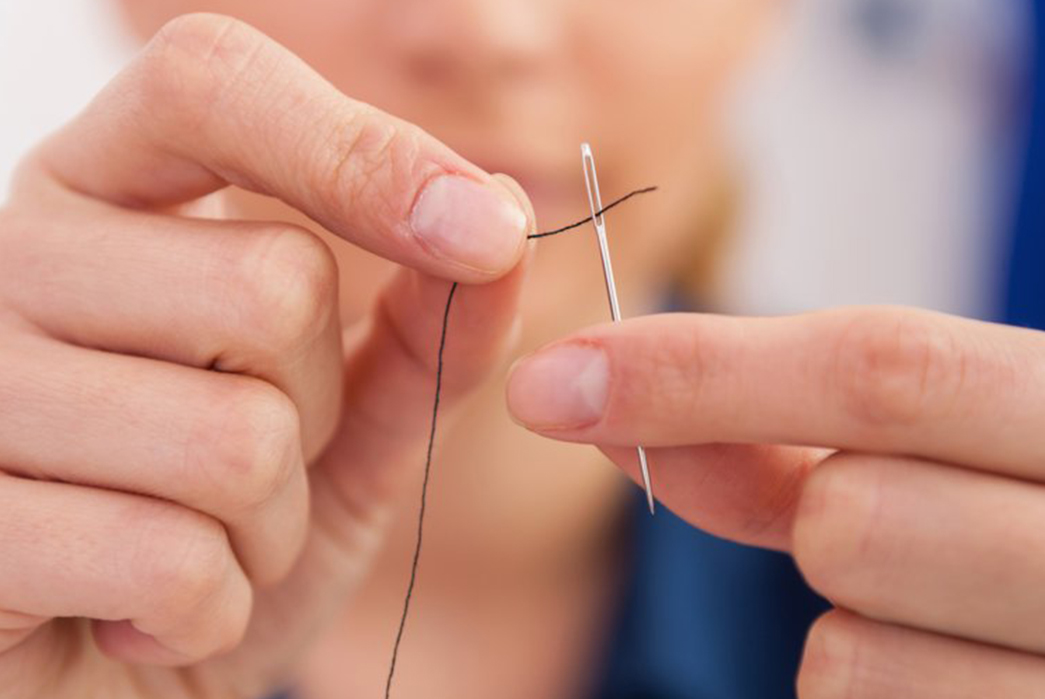
Image via Insider
2. Thread the Needle
The next step is to thread your needle. Select your thread, cut a reasonable amount (e.g. 1-2 feet) and thread one end through the eye of the needle. Remember to use your needle threader here, if you have one. Following this, tie a knot at the opposite end of the thread. This can be done a number of ways, but the result will be the same. One way is to wrap the double thread ends around your pointer finger and twist it off with your thumb.
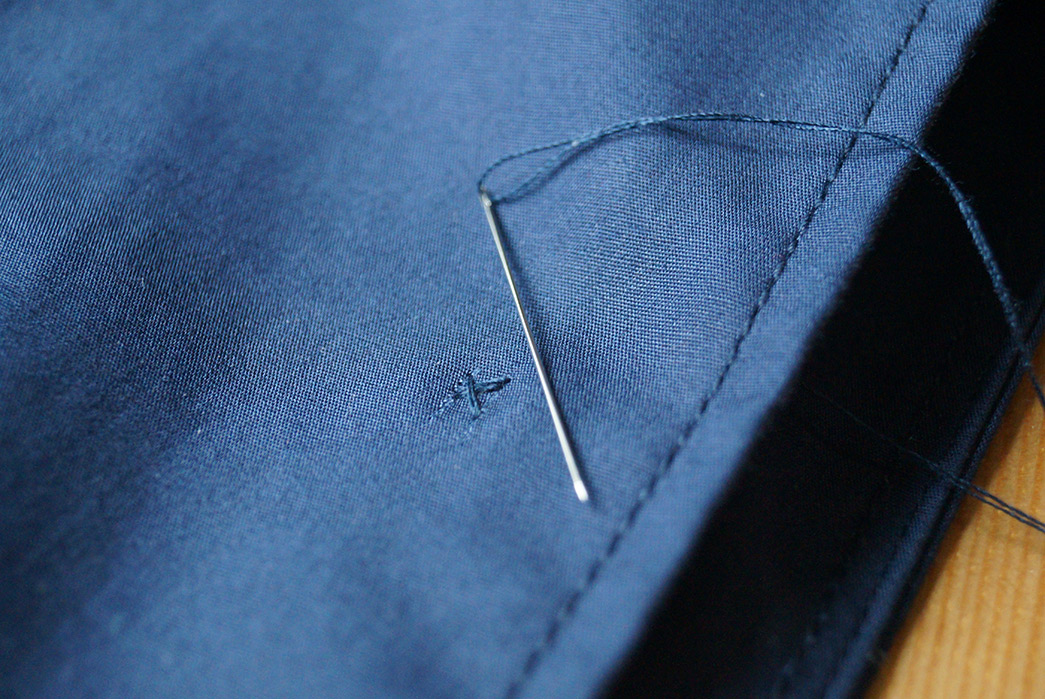
Image: From Squalor to Baller
3. Mark the Fabric
If it’s difficult to see the existing buttonholes (or if there aren’t any), you may want to mark a small ‘X’ on the fabric to guide your sewing. This can be done with a fabric pencil or two small stitches as shown above. If you’re attaching a number of buttons and this is your first time, you may want to start with the most hidden button until you get the hang of things.
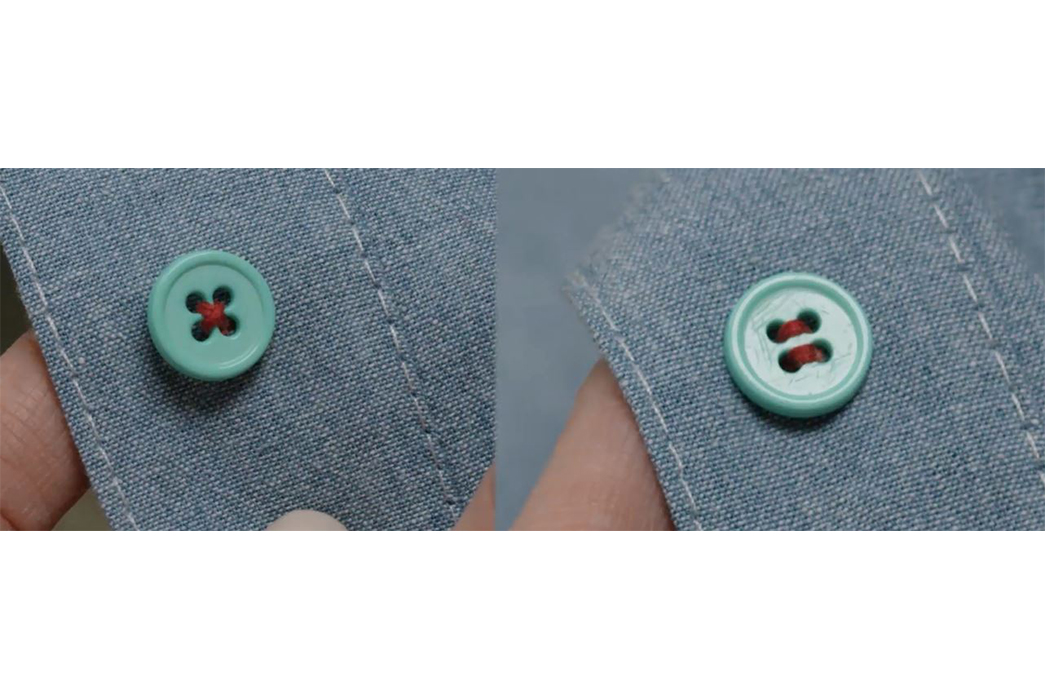
Image via Fabric.com
4. Sew the Button
You now need to decide if you’re going to stitch an ‘X’ pattern or ‘II’ pattern (for a 4-hole button) and start to sew. Push the needle from the underside of the fabric through the buttonhole and give a gentle pull to make sure the knot you tied stays on the underside of the fabric. Then, push the needle the opposite way, through the top of the buttonhole and through the fabric, coming out on the underside. Repeat this step as many times as necessary; 4 or 5 stitches should be plenty for a small to medium size button. You may want to stitch in the same direction and then switch to the other.
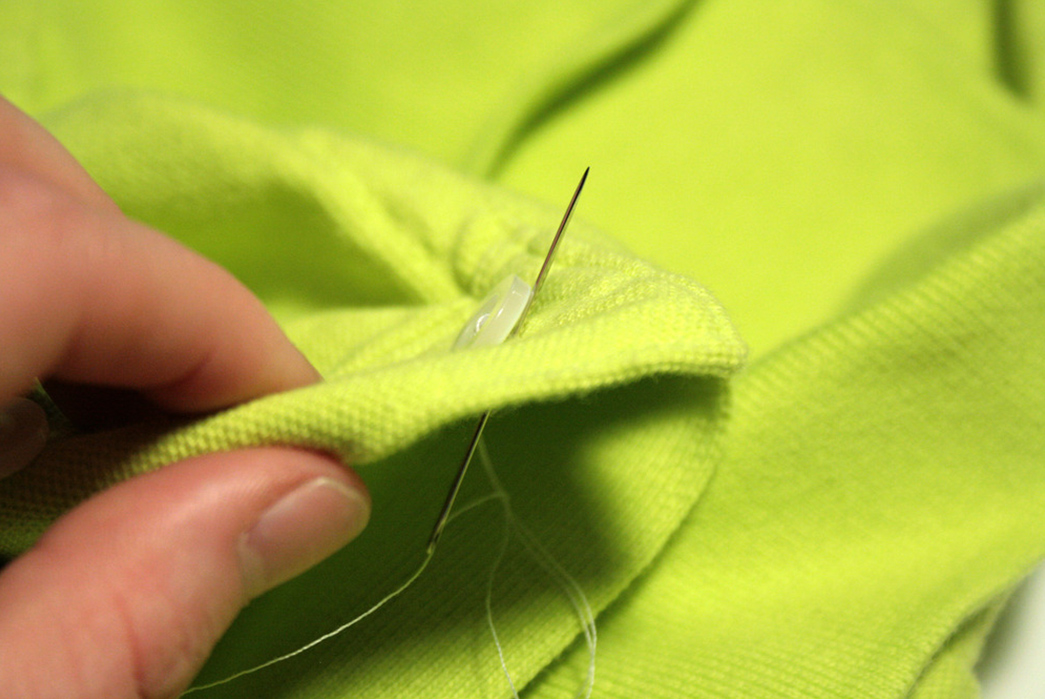
Image via ManMade
5. Create a Thread Shank
Once you’re happy with the strength of your stitches through all the buttonholes, you will need to create a shank to strengthen the stitching. This is like the shank you see like the shank buttons from above. But rather than a piece of metal attached to a button, you’ll be making this shank out of the sewing thread itself. On your last repetition of the previous step, come up through the fabric from the underside but do not go through the buttonhole. Instead, turn the needle aside and bring it out from underneath the button. Wrap the thread in circles around the bottom of the button and then stitch back down through the fabric. This creates a shank and tightens the stitches you have sewn.
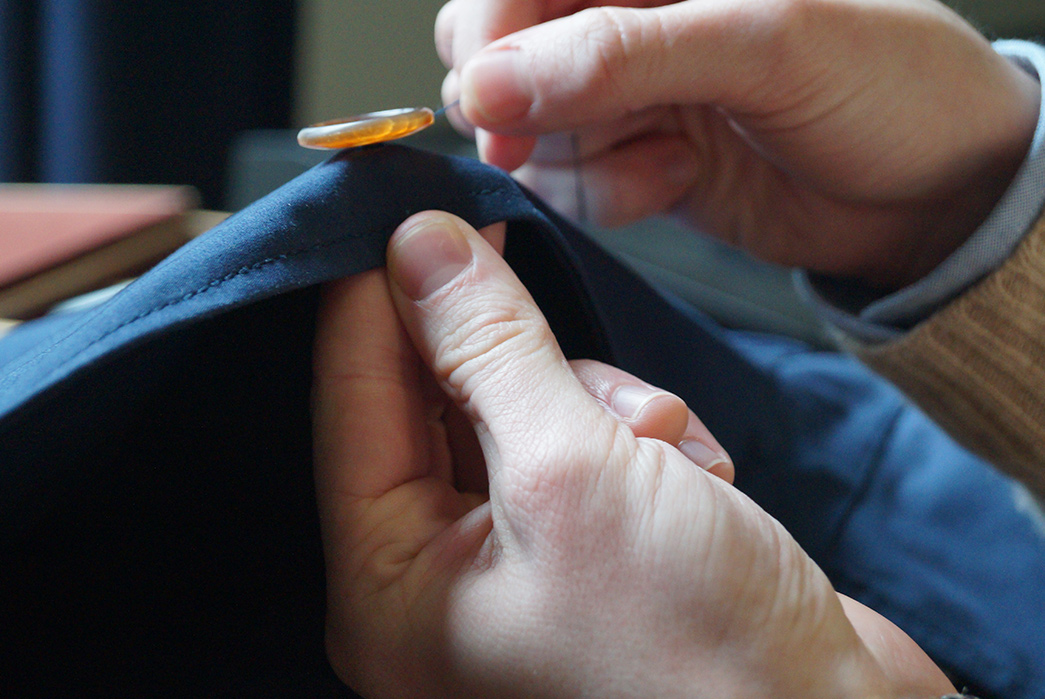
Image via From Squalor to Baller
6. Tie the Knot
The last step is to tie the end of the thread and secure your stitching. There are a number of ways to do this, but the most simple is by making a small loop with the excess thread on the underside of the fabric and then feed the thread through the loop and tie a basic knot. This can be repeated as many times as necessary.
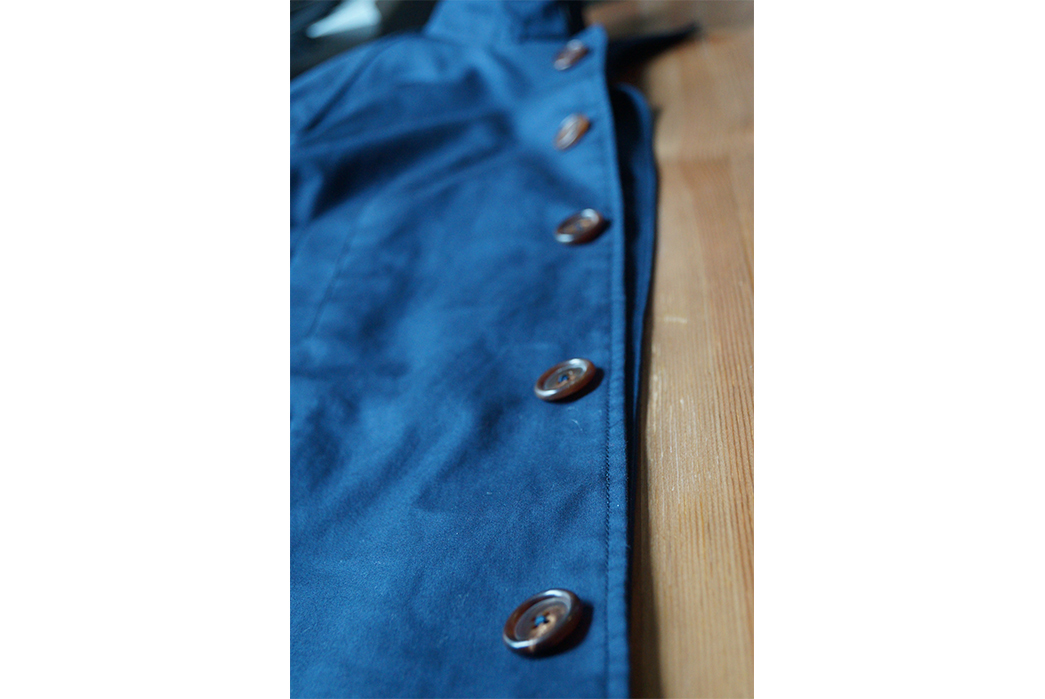
7. Sit Back and Marvel at Your Button Sewing Ability!
The old saying ‘measure twice, cut once’ can be applied to sewing a button. While you’re not measuring or cutting per se, the premise remains the same: don’t rush into it. Select your tools, have a clean workspace and take your time. You want to avoid damaging the fabric of the garment in particular as that will involve additional repairs which you may need to pay for whether in time and/or cash. But in contrast, don’t be afraid. Sewing a button is a simple task and the steps above should guide you through the process in a few simple steps. So grab your needle, choose your button and get sewing!
